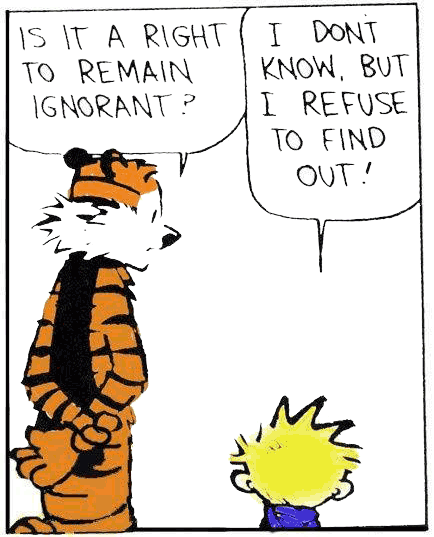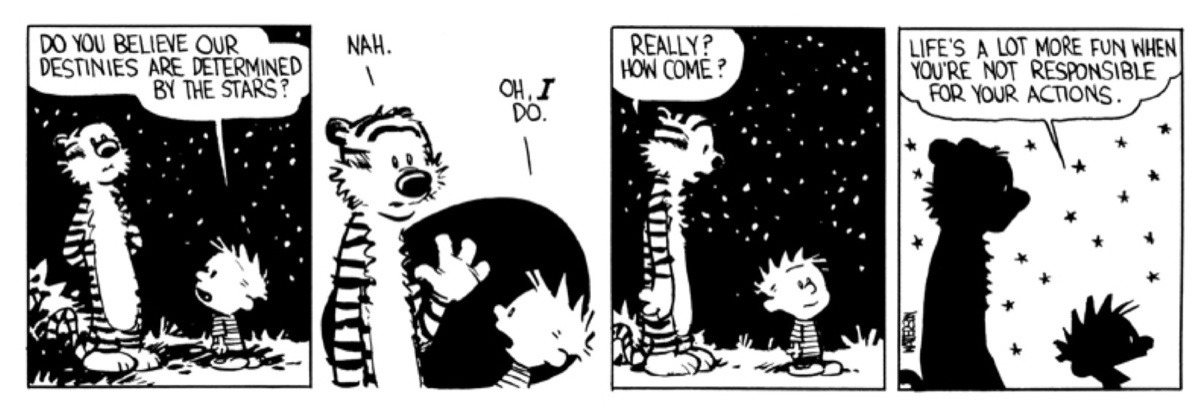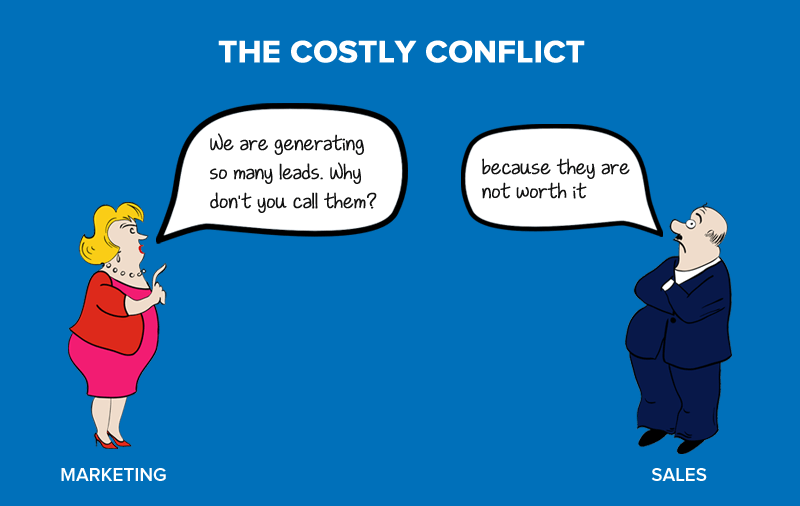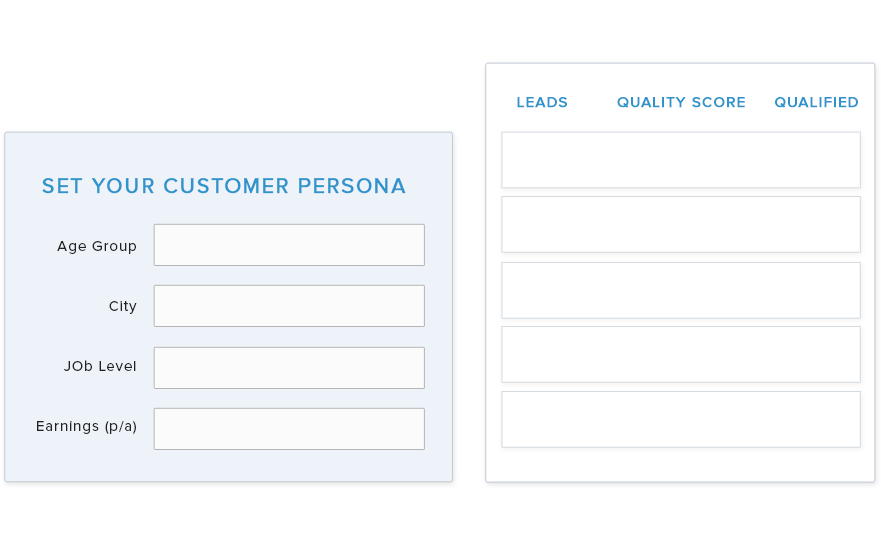
In simple terms, a lead is an individual or organization with an interest in what you are selling. The interest is expressed by sharing contact information, like an email ID, a phone number, or even a social media handle.
The definition seems so simple, that “what is a lead” doesn’t seem like a question worth answering.
But, that’s not true.
The single biggest debate between marketing and sales arises from the question “what is a lead.” And it’s no small debate!
It’s what causes a marketer’s myopia. Marketers revel in the number of leads they have generated, closing their eyes to continuous sales complaints about lead quality.

It’s also what causes sales to dismiss marketing leads as low-quality, without cross-verifying. They end up delaying follow-ups, losing opportunities that might have converted. In the end, the blame lies with marketing for not generating quality leads.

The biases are well-documented:
- Only 25% leads are legitimate and should advance to sales – Gleanster Research.
- Sales reps make 1.3 (average) call attempts before giving up on a lead.
So are the consequences the company faces:
- Companies with poor sales and marketing alignment have a 4% revenue decline year on year.

The marketing – sales conflict

So, there’s a continuous conflict between marketing and sales about leads. Marketers spend countless hours and dollars generating leads, but most of those leads are junked by sales.
This is devastating for the business. Because, no matter how one defines a lead, the business aim is the same – to increase the revenue. Therefore, it is really important to have both your marketing and sales team in sync with each other.
The need for marketing-sales sync
- Companies with strong sales and marketing alignment achieve 20% annual growth rate. Whereas, companies with a poor sales – marketing alignment have a 4% revenue decline.
- Companies with aligned sales and marketing generated 208% more revenue from marketing (MarketingProfs)
So, as a marketer, you should not think about just generating leads, but about generating high quality leads. And as a salesperson, you should share constant feedback with the marketing team, about the quality of leads.
To put this debate to rest…
The teams working together (sales and marketing) must agree on what a lead is. And then, work towards generating them.
This description that you agree on is your ideal customer persona. The leads that you generate matching this description are your ideal leads.

So, what is a lead?
Someone fills up a form on your website, calls your company landline requesting info, initiates a chat on your website, or interacts with you on social media.
Is it a lead?
By a marketer’s definition..
This would be a lead. Because, for a marketer, lead is someone they can trail. You have captured their contact information – like a phone number, email or a social media account. If marketing can nurture them, and get them interested in a sales conversation later, it’s a lead.
By a salesperson’s definition..
They have just expressed a vague interest, and it can turn out to be the best deal of the quarter or just flat out junk. These leads are not qualified. So, sales would not consider this inquiry a “lead” yet.
It makes sense, because chasing every lead is a waste of salespersons’ time. Time that they’d rather use doing followups, generating outbound leads and calling opportunities. For them, the definition of lead is limited just to sales-ready leads, or the ideal lead that we discussed above.
So, where’s the middle-ground?
Hence, if someone making an inquiry matches your ideal customer persona, it qualifies as an ideal sales lead. These leads become even more important, when they take a further action after their initial inquiry. For instance, if they specifically ask for a demo of your product, or take a free trial, they are sales-ready.
[Also read: MQL vs. SQL – How to Turn Marketing Qualified Leads to Sales Qualified Ones]
Should we stop generating leads that aren’t sales-qualified?
No, that’s plain stupid. And unrealistic. You cannot and *should* not stop leads from entering your sales funnel.
Someone interested enough in a freebie related to what you sell, will have a buying intent in future, if not now.
However, you need proper processes in place to assign leads to sales only when they are sales-ready. This qualifying point can be defined by their lead score or any activity that indicates buying intent.
In conclusion
Here’s how to agree on a common definition of a lead, and ensure marketing-sales alignment.
A) Define an ideal lead
According to your historic data, what kind of leads close more often? There must be specific demographics, geographies and behaviors common to your ideal lead persona. In addition, lead generation channels can also be an important part of it. For instance, LinkedIn might get you more leads matching your customer persona.

B) Have a proper qualification system in place
The leads should progress to sales only when they match the ideal lead persona + take an sales-specific action. You can monitor this, by using tools like lead scoring and lead tracking.

We’ll discuss in further detail about marketing-sales alignment, and lead qualification in upcoming chapters. I hope for now, the definition of a lead is clear to you, from both marketing and sales perspective.
Let’s summarize with an infographic..
It shows the problems that occur from marketing-sales misalignment. Almost always, the first step in addressing these problems is to have a definition of “lead” that marketing and sales agree with.

There are some other terms you must have heard, like prospects, contact etc. They might be used interchangeably in different industries, or even in different organizations. What’s the difference. Let’s find out in the next chapter
Go to Chapter two
FAQs
Qualifying leads saves time and resources. Here’s how to approach it:
1. Lead scoring: Develop a lead scoring system that assigns points based on criteria like budget, industry, and pain points. Leads exceeding a certain score are considered qualified and prioritized for sales outreach.
2. BANT qualification framework: This framework uses criteria like Budget, Authority, Need, and Timeline to assess a lead’s qualification. Leads that meet all or most criteria are considered promising prospects.
3. Discovery calls: Schedule calls with leads to delve deeper into their needs, challenges, and decision-making process. This allows you to determine if their needs align with your offerings and if they have the budget and authority to make a purchase.
Nurturing keeps them engaged. Here are some strategies:
1. Targeted email marketing campaigns: Develop email drip campaigns with educational content addressing the lead’s specific pain points and showcasing how your product or service can help them in the future.
2. Lead nurturing software: Utilize marketing automation tools to personalize communication, deliver relevant content based on the lead’s interests, and nurture them until they become sales-qualified.
3. Webinars or educational content: Offer free webinars or downloadable resources that address the lead’s challenges and position your company as a thought leader in the industry.
There’s no one-size-fits-all answer. Here are some factors to consider:
1. Industry and sales cycle: The typical sales cycle for your industry might influence how long you keep a lead in that stage. Complex B2B sales cycles might allow for longer nurturing periods compared to simpler B2C transactions.
2. Lead activity and engagement: If a lead hasn’t shown any recent activity or engagement with your marketing efforts, it might be time to disqualify them.
3. Internal lead qualification criteria: Establish clear lead qualification criteria within your sales team. Leads that don’t meet these criteria after a reasonable timeframe can be disqualified.








